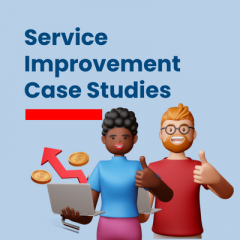By Andrew Hardwick, Director of Global Service Management Office, Arcadis
How to Measure ‘Customer Happiness’?
When we talk about Customer Happiness, or User Satisfaction, how do we measure and report this? There are several ways that you could capture the satisfaction of your users. Some of the options are:
1. Transactional Survey – send an email after closure of an IT ticket
2. Periodic Survey – sent to users on a regular basis, i.e. annually
3. Voice Call Survey – asking our users to complete a survey after calling the service desk
4. Random Sampling Survey – calling our users randomly after closure of an IT ticket.
All these methods have value and your user satisfaction strategy should incorporate feedback from different areas to get a clearer view of how users perceive the service they’re receiving from IT.
Most people are probably used to the first one of these; the survey that gets sent to you after you’ve received service. In a restaurant, this often takes the form of a comment at the bottom of your receipt asking you to provide feedback via a link, often with an incentive of a discount next time. Within IT, we often send users an email when we resolve or close a ticket within our ticketing systems; sadly, without the incentive of free garlic bread!
The IT Ticket Survey
ITSM tools usually have a survey mechanism built into them and it’s therefore fairly simple to set this up with some questions (possibly even the ones ‘out of the box’) and start to get results. Very often, these results are then used to give an overall percentage which is reported back to management in a report stating, ‘User Satisfaction = 89%’. What this number means though can be misleading as there are a few other factors to consider:
- Are all users 89% satisfied, or just users who replied to the survey?
- How is the 89% calculated?
- How many people received the survey?
- How many people replied to the survey?
- Is 89% a good score?
If you now want to move this to the next level, it’s worth spending some time, effort and thought working out what you really want to achieve and how you feel your survey will help drive these goals. For example, if you’re achieving a 5% return rate, is this really a representative sample of your userbase?
There are several commonly used methods used within these surveys. One method of measuring customer satisfaction involves a survey using a Likert scale. A series of statements are presented such as ‘The website is easy to use’ with a set of responses. The format of a typical five-level Likert item, for example, could be:
- Strongly disagree
- Disagree
- Neither agree nor disagree
- Agree
- Strongly agree
Research conducted in 2001 showed that in most commercial applications, a single-item overall satisfaction scale performs just as well as a multi-item scale. I’m certainly the kind of person who balks at the prospect of having to fill in 10 different questions about how satisfied I am with the service I’ve received. Therefore, careful consideration needs to be put into working out how many questions are needed.
Analysing your results and making improvements
Whichever method you use to collect your data, you then need to analyse it. There is little point in collecting lots of data if it’s not used, therefore analysing your data and understanding what your customers are telling you is essential. Using this data will allow you to conduct service improvement initiatives that are based on data and facts, rather than rumours and assumptions. Additionally, you’ll be able to measure any improvements that you make























